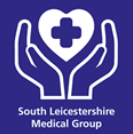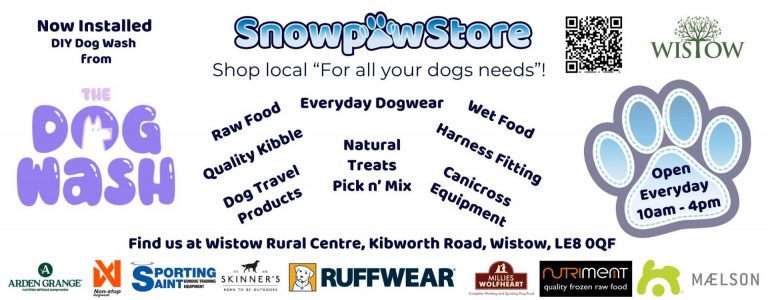A day in the life of a GP

I work full time as a GP at South Leicester Medical Group.
Since the Covid-19 lock-down in March my working life has changed dramatically.
There have been questions raised on social media, through e-mail and in conversation with patients.… Are GP’s still working? Are they seeing patients? Just what exactly are they doing all day?!?
We felt it might be helpful to try to give a flavour of a working day since the lockdown in order to help people understand and appreciate what we are doing.
I have not worked from home at all since the lock down and have continued to work full time throughout this crisis.
This is due to being fortunate to have good health so I have not had to shield. I have seen patients face to face nearly every day for examinations and assessments throughout this time.
See also: Medical Centre responds to patient frustrations
Admittedly in much lower numbers than before Coronavirus as we try to manage as much as possible remotely to lower risks.
There is the impression because the front doors are locked and people can’t just walk in that we are closed, I even had a patient say to me on the phone ‘are you all just sitting around playing cards?’
I can assure you this is not the case; I have fully booked clinics every morning and every afternoon and am often overbooked due to demand. The truth is we have never been busier.
Let me try to explain.
An example- a face to face appointment now isn’t simply calling a patient into the room and having a 10 minute consultation with them.
First you have to ensure the patient is on site and waiting in their car, then you have to don all your PPE (this gets quicker with practice but does take time), then you have to bring the patient into the building, ensuring their mask is correctly fitted and they have used hand sanitizer, (then the 10 minute consultation), and after escorting the patient back out of the building you then have to deep clean the room.
This involves a variety of wipes, tissue rolls, taking off your own PPE, and of course the 2 minute hand wash whilst singing happy birthday.
All in all a pre-covid, straight-forward 10 minute consultation slot is used with the coronavirus protocols and infection measures, then there is the typing up, tests to organise if needed, prescriptions to be sent etc etc.
So how have we managed this increased work load?
Well our face to face appointments are now 15 minutes, rather than 10 minutes. It may not be enough (and a lot of GPs would argue even before covid, primary care consultations should be 20 minutes) but it helps.
So how do I get a face to face appointment now? and what about these ‘video consultations’?
Oh and why can’t I just walk into the surgery anyway? I can walk into the pub! I hear you ask.…well.
As GPs, working remotely has been incredibly hard.
We went into primary care to interact with people face to face and form bonds with our patients. Let alone the difficulties of assessing someone properly over the telephone or via a video consultation – so much harder than a face to face consultation.
But, for very good reasons, places like GP practices should be the very last place to open up. Why?
Well, in a pub or restaurant you will be socially distanced, usually in larger spaces with people who are fit and well, feeling healthy and are out to socialise and have a good time.
In a GP practice, most people attend because they are unwell, unfit, are suffering with underlying medical conditions or have undiagnosed symptoms; in short the very people who are high risk for catching or spreading Covid and having poor outcomes if they do get it.
For instance, we have extremely vulnerable patients who need blood tests (perhaps on chemotherapy or immunosuppressants for various conditions) who are shielding immunocompromised.
You might feel fine when you pop into the surgery to book your appointment about your hearing test, but then come down with a fever and cough later that day having shed coronavirus into the waiting room only to be inhaled by the woman having chemotherapy for breast cancer in the queue 2 metres behind you…
So I hope we can all agree, trying to reduce throughput into the surgery to protect people is sensible and not the same as going to the local Co-op or Pub.
When we do open the doors again (and we were looking into this just when Leicester went into lock down again recently), it needs to be done in a very careful and controlled way to protect everyone.
So the only safe way to determine who needs to come to the surgery and have a face to face consultation is to telephone triage all patients.
This means you will be given a telephone call by a clinician before you can access a face to face appointment or video consultation.
You may still have one or both of these, but often we are able to sort issues out without the patient needing to come to the surgery.
If I speak to you in the morning and feel you need a video consultation I will do this at the time – we are using software that allows this with any smart phone, and each clinician has a webcam on their computer (by the way this is all very time consuming again, trying to explain to someone how to use their phone and new software to have a video consultation whilst you are on the phone to them is not always easy!)
If I feel I need to see you face to face, I will book you in usually in the afternoon to see me.
So what does my day look like?
Well, we start at 8am with a full list of appointments – all tele or video consultations.
This is a three hour long surgery which takes us through to 11am (if we are running to time…which is almost impossible given the above issues).
We then have our daily tele-meeting with the doctors and management team for an hour or so – this didn’t exist prior to coronavirus – but because things are changing so quickly and constantly – guidelines, PPE, local lockdowns, travel restrictions, schooling, shielding, home working, flu clinics etc. etc.
We have really needed these additional meetings to keep the service running.
This takes us through to midday.
We then have scripts to sign and look at, tasks about a huge number of things from sick notes to referral letters to sort, daily blood and radiology results to go through and act upon, daily letters to get through (with 27,000 patients there is a lot of paperwork to get through) and action, clinical discussions and debriefs to carry out with our clinical colleagues, I will usually try eat something whilst doing this paperwork before starting the afternoon surgery at 2.40pm.
This is then booked through to 5.30pm with a mix of face to face and teleconsultations.
Our surgery closes at 6.30pm, and then it all starts again the next day.
I am proud of my colleagues who have stepped up through this crisis.
In the early days, when we all thought we would get it, there was very little PPE or information about coronavirus, we genuinely thought there was a risk of personal death in turning up to work, but we all did.
And we have continued to throughout this. Despite what some patients may think, we are not playing cards I promise.




 September’s Editorial
September’s Editorial

